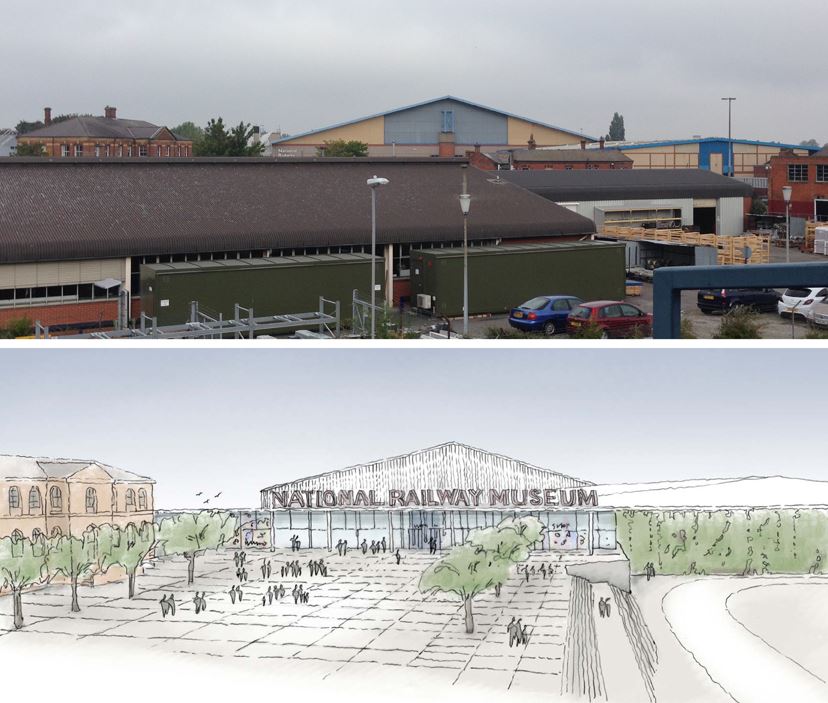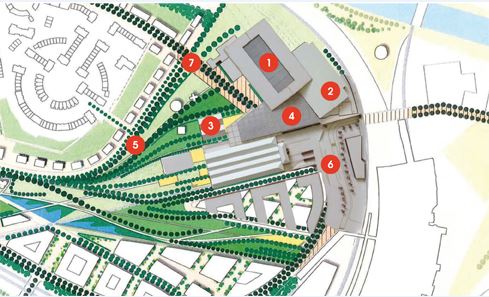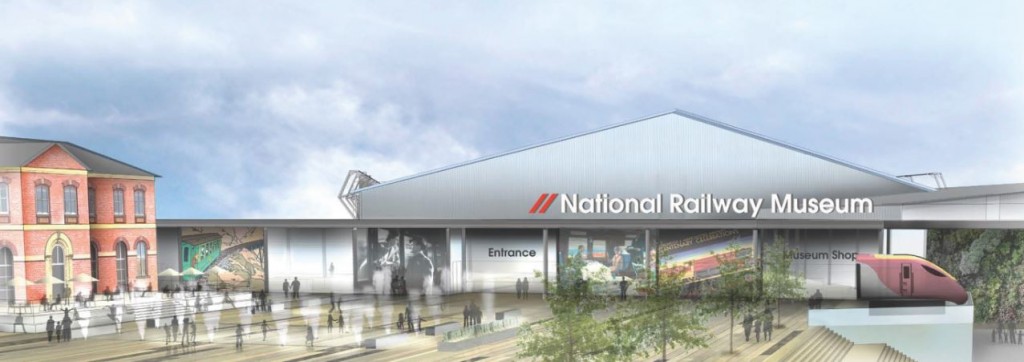When I arrived at the National Railway Museum at the end of 2012, my colleagues were still a little bruised from the recent collapse of plans to develop the land behind York Station. Along with many others in York, we had put a lot of time and effort into getting the huge swathe of brown field land around the museum into more productive use. There was an air of frustrated resignation about York Central’s missed opportunities.
I came to the museum and York as an outsider, and from London where I’ll now admit big investment happens a bit more easily. It seemed incredible to me that nothing was happening. One of the country’s best known interchange stations, with 1 hour 50 trains to London, was not meant to border a huge zone of surface car parking, warehouses, car washes and disused railway sidings. It is testament to the fundamental strength of the museum that 750,000 people a year come for a day out in such an unpromising location.

We started thinking about what we needed to do to realise the potential of world’s greatest historic railway collection and it became clear to me that there were three problems York Central could solve for us.
It allows us to make the building work for visitors. At the moment, it’s hard even to find the museum entrance and once inside, the museum is split in two by a road. I’ve met visitors who didn’t realise the other half of the museum even existed. Clearly, starting from scratch, no-one would have designed a museum like that. By moving Leeman Road, we can build an inspiring and welcoming entrance, that links together all of the museum, so people can find their way around without struggling with underpasses and things hidden from view.

It will put us in the City Centre. York is a great place to have a museum. There are 7 million tourist visits a year, but they only come to the National Railway Museum if they have made a very specific visit. Instead of being at the centre of the action, we are literally the wrong side of the tracks. York Central will make the museum the cultural heart of a new city centre district for York, and our surroundings will be the kind of streets, squares and parks people want to linger in – and then visit the museum as well.
It’s bold enough to happen. Lots of the things we want to do at the Museum don’t need York Central. But the development is already getting national and international attention. It can be a catalyst. When all our small and medium sized plans are part of a bigger vision for the museum, and for York, they are much more likely to happen.
So you can guess what I’ll be saying to the City of York Council’s consultation! Have your say too.

Last time we visited was when you had the tour de France Yorkshire stage in the city. Having sign posts that can guide you in from different approaches would be handy.
I think it’s a brilliant idea as long as you get better engines in there like instead of a few of the old and American engines get some uk ones and do like mainline specials from somewhere to the national railway museum so people can see it from around the country and then people like me who love the railways will be more absorbed to the station and NRM so yes it’s a good idea
In principle, a great vision and I hope it comes about. But, it seems, this plan would involve the removal/demolition of the original Goods Yard entrance buildings/weighbridge office, which are an essential historial context of the whole site, and will be replaced by a meaningless open space. Why?
Any plan to increase the ease of use and attractiveness of the NRM is progress. Currently there is far too little emphasis on the wonderful engineering enshrined in the collection. This must be addressed. There is so much that could be done to fascinate all ages and backgrounds. Great care must also be taken to not lose any more of the historic infrastructure on site. Customised buildings also have a lot to say about railway development.
The link on the map (We’ve already planned specific project to upgrade the museum – find our more about these seven areas.) in the blog post is giving a page not found error.
When it comes to railways nothing stays the same forever and it is quite right that the NRM should be bold in its outlook for the future. The NRM is not only the UK’s National Railway Museum it’s the heart of the history of railways around the world and needs to be able to present an image that claims this distinction. I certainly support these proposals and would encourage all involved in the decision making process to think of the future and what York needs as well as the needs and future of the NRM collection.
…..and where will all the surface/storm water be discharged? Time to think hard on this aspect in view of the way the adjacent river floods the center of York.
If Leeman Road is rerouted, will the new route be less liable to flooding?
One easily recalls the photograph of a Bristol L5G single-decker of United Automobile making its way through flood water under the Leemsn Road bridge in 1950.
I am concerned about the threat that the station hall will be hermetically sealed meaning that exhibits will never be allowed to be moved in or out of the building. By all means the building should be temperature-controlled in order to protect the priceless Royal saloons but even they will sometimes need to be moved out of that building when conservation work is required. By all means cut off the present rail access to the building if there are valid reasons for doing so, but in that case an alternative access route should be provided.
One comment from Railfest 2012: “Boxhill” was displayed behind a closed door with “Stepney” just outside. It’s a pity that door was not opened so as to show two Terriers smokebox-to-smokebox!
I say yes to the improvements to the NRM ,it would make the access easier for disabled people and a pleasant surrounding area. the only thing place that should left art the entrance is weighbridge and building as part of the history to museum as well as a reminder to what he place was before the museum was built the Leedham Road would be better relocated as to make easy access to the of yhe grand hall ,workshop and archives
It would be good if some British built locomotives for former Empire railways could be repatriated for display. Some of the current North British Locomotives lanquishing in South Africa and other Commonwealth countries wouls make a great addition to the collection, and it would be brilliant if some could be returned to steam? Would the Heritage Lottery Fund help with achieving such objectives.